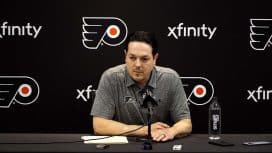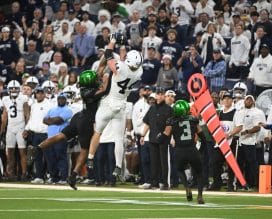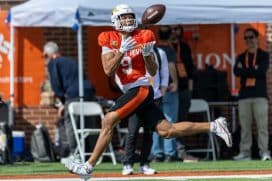Uncategorized
This Week in Flyers History: Week ending December 20
December 15, 1996
In the days before the salary cap, it was common for some of the "bigger market" teams to throw money at problems or deficiencies in a way that others could not. The Philadelphia Flyers were one of those teams who were not afraid to spend money to acquire quality talent, even if that talent was on the downside of a career, a no-brainer Hall-of-Fame career.
On this day, the Flyers acquired defenseman Paul Coffey from the Hartford Whalers in a five-player deal. He brought with him a resume of winning four Stanley Cups, being a 12-time All-Star and a host of offensive scoring records from his days in Edmonton and Pittsburgh.
The Flyers were looking to bolster their power play and have a puck carrying defenseman that could skate. Even at 35 years old, Coffey could still skate like the wind and jump into an offensive play to attack and outnumber the opponent's defense.
Ironically, Coffey would score his first goal as a Flyer, in the place where it all began for him in the NHL, in Northlands Coliseum in Edmonton on December 27. In a Flyers 6-4 win, he recorded two points, his goal and an assist on a John LeClair second-period tally.
Although Coffey was dinged up with some injuries, his contributions were evident for the Flyers that season. He recorded six goals and 20 assists in 37 games. In the Flyers run to the Stanley Cup against the Detroit Red Wings, Coffey played 17 games with a goal and eight assists.
The following season of 1997-98, Wayne Cashman was brought in to replace coach Terry Murray. At first, Coffey and the Flyers would look like the team that made the run to the Cup finals just a season ago. Then in March during a 4-8 skid, GM Bob Clarke had a knee-jerk reaction, demoting Cashman — who led the team to a 32-20-9 mark — to assistant coach and brought in the well traveled Roger Neilson to lead the squad.
Under Neilson and a more defensive approach, Coffey would start to see a downturn in his play, making some mistakes defensively. Neilson would make him a healthy scratch in nine of the last 11 regular season games. He would play in just 57 games, scoring just two goals and adding 27 assists for 29 points.
In the first round of the playoffs, even with a nagging foot injury to Dave Babych and neck injury to Petr Svoboda, Neilson opted to leave Coffey up in the press box, not willing to risk any lapses in the defensive zone. It would be a costly mistake as the Flyers had trouble, much like the rest of the hockey world did that year, scoring on Dominic Hasek. The Flyers would score just nine goals on Hasek in five games as they lost in the first-round series, 4-1, to the Buffalo Sabres. With the decision to leave Coffey out of the lineup, the Flyers were an inept 3-for-35 on the power play in the series.
Although Coffey had one more year on his contract, he knew his days in Philadelphia were over. Deeply disappointed, he knew he could still play and definitely had the desire to do so.
In the coaching carousel that was the Flyers for the two seasons that Coffey wore No. 77, he played in 97 regular season games. He recorded eight goals and 47 assists for 55 points. For all of the "concern" of his defensive play, he was a plus-14 in those games.
Coffey would be traded by the Flyers in the offseason to Chicago, for a fifth-round selection in the 1998 draft, which ended up being Francis Belanger. Paul would go on to play for Chicago and Carolina before ending his Hall-of-Fame career at age 39 for the Boston Bruins in December of 2000.
In 1,409 regular season games, he scored 396 goals and had 1,135 assists for 1,531 career points. His 1,531 NHL points rank him 13th all-time and second for a defenseman, only to Ray Bourque's 1,579. Coffey was inducted to the Hockey Hall of Fame in 2004.
Mike Watson is a contributing writer for Flyerdelphia. Follow him on twitter @Mwats_99.





